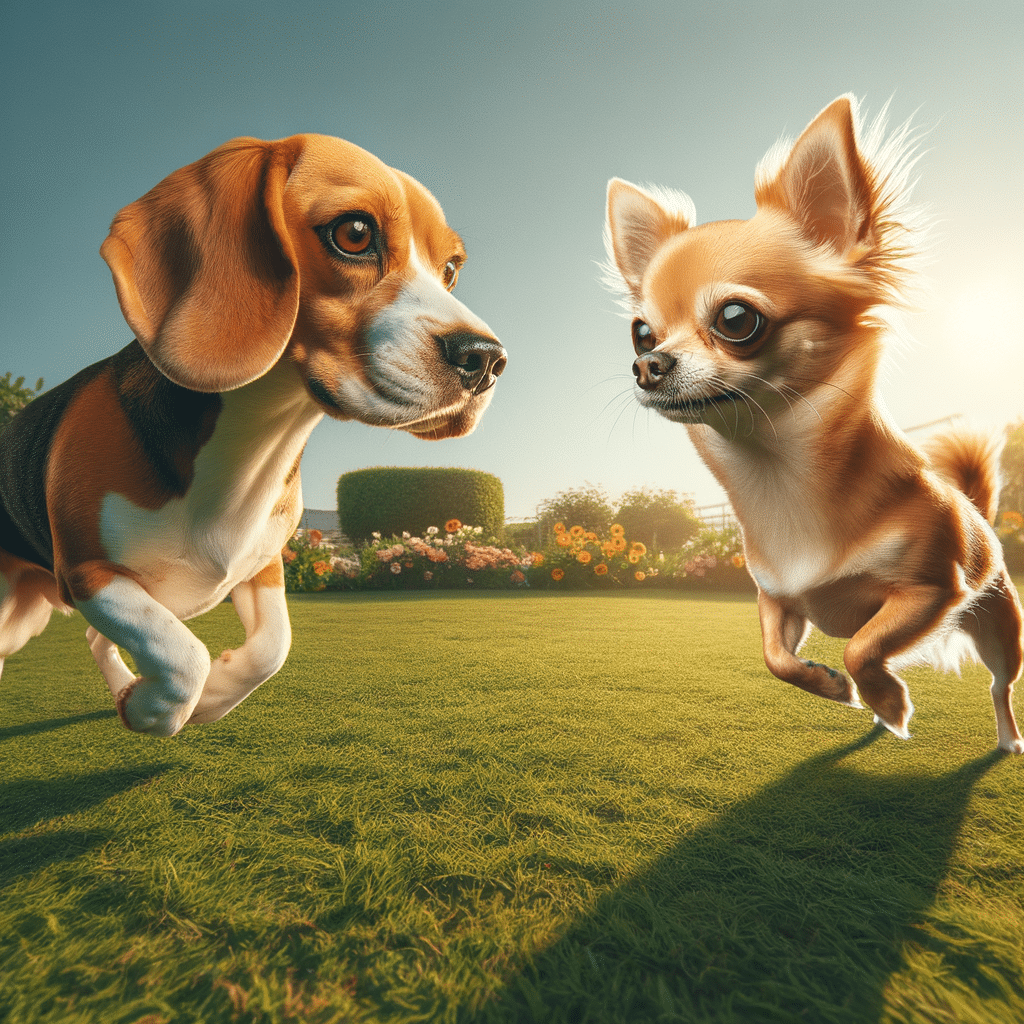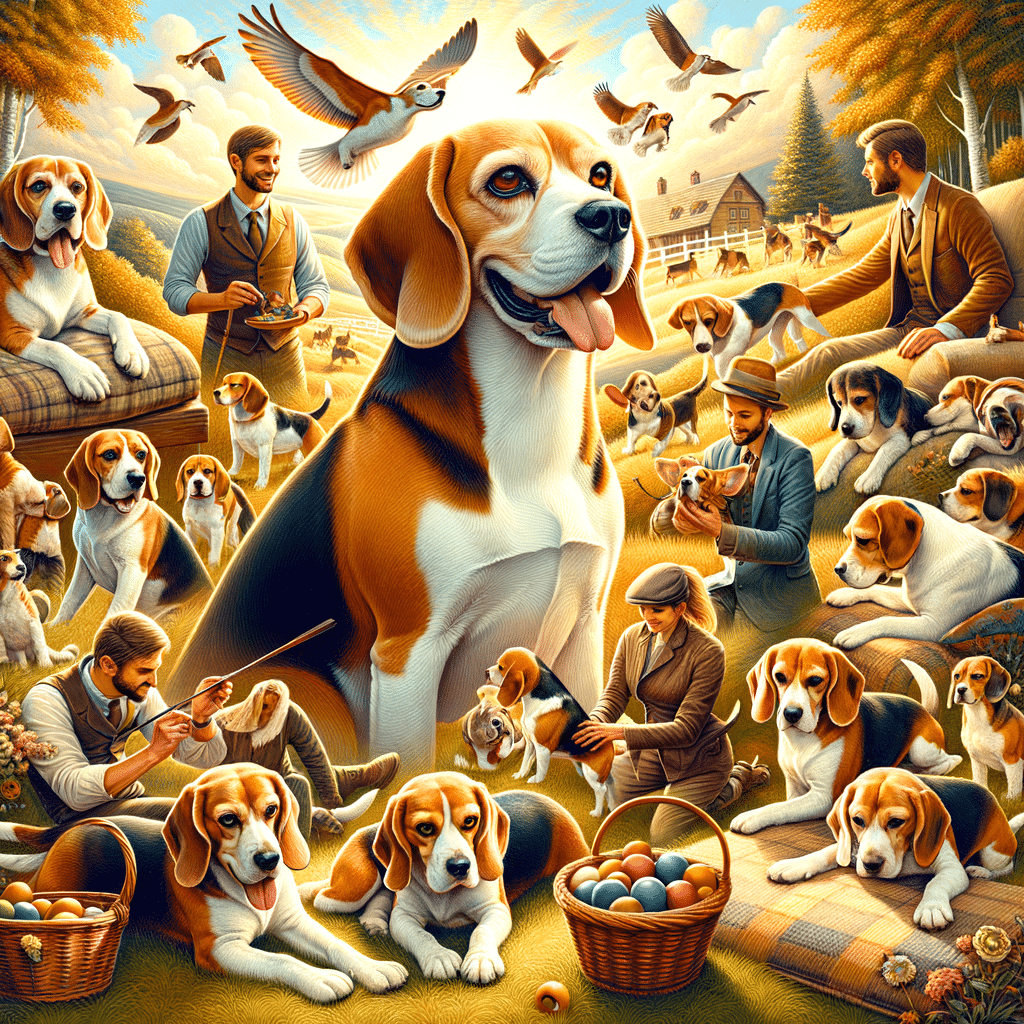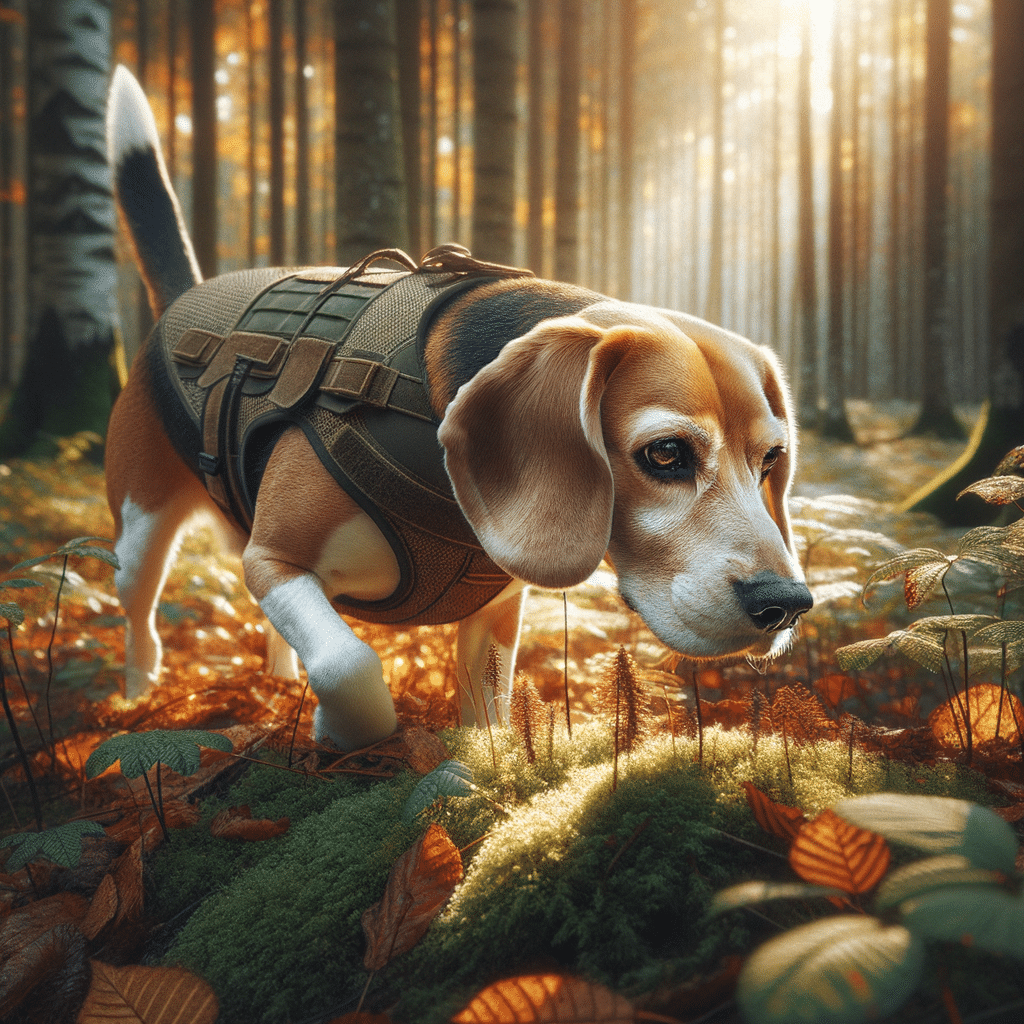The beagle and coonhound are breeds that often spark interest among dog enthusiasts in the United States, particularly those fond of hounds with a strong hunting heritage. Recognized by the American Kennel Club, both dog breeds showcase exceptional scent-tracking abilities, making them formidable hunting companions.
In This Article
However, despite some similarities in their scent-driven purpose, they differ in several key characteristics, from physical attributes to behavioral tendencies. If you are considering one of these two breeds, pay attention to our beagle vs. coonhound breed characteristics face-off to figure out which one will best meet your and your family’s needs.
While beagles have a compact size and friendly demeanor, making them suitable for a variety of living situations, Coon hounds are larger and possess a more demanding exercise requirement, reflecting their working dog lineage. As a potential owner, you should consider these traits and the distinctive care needs and health considerations associated with each breed. You can then decide on which hound best fits your lifestyle.
Highlights
- Beagles and coonhounds have distinct physical and temperamental differences.
- Prospective owners need to consider breed-specific health and care requirements.
- Both breeds require an environment that accommodates their hunting instincts and exercise needs.
Breed Characteristics and Temperament
Specific physical attributes and behavioral traits offer distinct insights into each breed’s suitability for various owners when comparing beagles and coonhounds.
Physical Attributes
Beagles are generally small to medium-sized dogs, with adults usually weighing 20 to 30 pounds and standing about 13 to 15 inches tall at the shoulder. Their coat is typically short, dense, and smooth, and it comes in various colors, including tricolor, red and white, and lemon. Beagles are recognized by their soft, pleading expression complemented by a sturdy build.
Even though the beagle is highly popular in North America, its origins are in the United Kingdom. These small pack hounds helped humans hunt rabbits and hares, and they later became known as beagles. Some people refer to the breed as a North Country beagle, harkening back to its origins. Beagles have a lot of stamina, which helps them stay on the scent of rabbits during a long chase.
Conversely, coonhounds are larger, with breeds like the English coonhound, Treeing Walker coonhound, bluetick coonhound, and redbone coonhound varying in size. For instance, Treeing Walker coonhounds can weigh between 50 to 70 pounds and measure up to 27 inches at the shoulder. Coonhounds typically have a dense and smooth coat with colorations that may include black, tan, and white.
Behavioral Traits
Beagles are known for their friendly and curious temperament, often showing affectionate and loving behavior. They can be intelligent and energetic, but training may sometimes be challenging due to their stubborn streak. Their prey drive is strong due to their scent-hound heritage, so they may be prone to chasing.
The beagle is a friendly and affectionate breed. Because they are loving, they’re excellent family pets who are generally good with children. Beagles are also quite social, displaying a welcoming demeanor towards strangers. This trait makes them poor choices as guard dogs, though.
Coonhounds are also affectionate and friendly. They’re known for their loyal and playful natures and tend to be more independent. Coonhounds may require consistent training to manage their prey drive and tendency to follow scents. Their energy level is high, making them unsuitable for an inactive lifestyle.
Both breeds are considered kid-friendly and pet-friendly. While beagles are more sensitive and adaptable to country and city living, coonhounds, with their loud baying and larger size, may be better suited for more spacious, rural environments. Coonhounds are often more reserved with strangers, while beagles are generally more welcoming. Both breeds have a strong instinct to follow scents and can be patient and caring companions.
Health and Care Considerations
Potential owners should be aware of breed-specific health issues and the necessary grooming and daily maintenance to ensure the health and happiness of beagles and coonhounds when considering their health and care.
Common Health Issues
Beagles are generally healthy, but they can be prone to certain health conditions:
- Obesity: Beagles love to eat and can quickly become overweight. Proper diet, exercise, and dog food are crucial.
- Epilepsy: They may suffer from this neurological condition that can cause seizures.
- Ear Infections: Due to their floppy ears, beagles are susceptible to ear infections requiring regular monitoring.
Coonhounds, including the English coonhound and the black and tan coonhound, also face specific health challenges:
- Hip dysplasia: A common genetic condition where the thigh bone doesn’t fit snugly into the hip joint. This is a frequent issue for a southern hound dog like a beagle.
- Bloat: This life-threatening condition can affect deep-chested breeds like coonhounds and requires quick veterinary intervention.
- Ear infections: Like beagles, coonhounds with long ears are prone to ear infections and require regular checks.
Grooming and Maintenance
Beagles have a short, dense coat that sheds but is relatively easy to groom:
- Grooming: A weekly brush can minimize shedding and keep the fur clean.
- Maintenance: Regular ear checks and cleaning are essential to prevent infections.
Coonhounds require regular maintenance, though their grooming needs are not extensive:
- Grooming: They have short to medium-length coats that benefit from regular brushing to control shedding.
- Maintenance: Coonhounds also need their ears checked and cleaned regularly to prevent infections.
Proper dog health maintenance for both popular dog breeds should include routine exercise, which keeps them active and helps prevent obesity. A balanced diet tailored to each breed’s nutritional needs is critical to their overall health.
Dog owners should schedule regular veterinary check-ups to help detect and manage the breeds’ common health issues, such as hip dysplasia in coonhounds and epilepsy in beagles. With conscientious care, dog articles will tell you that the average lifespan for beagles and coonhounds can reach 12-15 years, respectively.
Living Considerations
When considering a beagle or a coonhound as a pet, their adaptability to environments and exercise needs are vital factors that affect their well-being and compatibility with a family or individual’s lifestyle.
Adapting to Environments
Beagles are versatile dogs that adapt well to different living conditions, making them suitable for house and apartment living. However, they require adequate play space and may struggle with isolation if left alone for long periods.
Regular social interaction is imperative to keep a beagle happy. Coonhounds thrive in more spacious environments due to their higher energy levels and strong prey drive stemming from their hunting heritage. Their adaptability to apartment living may be less than beagles, although it is possible with proper training and daily exercise.
Beagle
- Apartment: Suitable, prefers companionship and regular play
- Space: Moderate, requires room for play
- Social needs: High, prone to separation anxiety
Coonhound
- Apartment: Possible with adjustments, prefers larger space
- Space: High, needs ample room to satisfy high prey drive
- Social needs: Moderate to high, enjoys being part of a pack
Exercise and Activity Needs
Both breeds are active and require regular exercise to maintain physical and mental health. Beagles are playful and energetic, often needing at least an hour of activity each day from their beagle owners to prevent boredom and destructive behavior. They enjoy playtime with children and can be great companions for outdoor activities.
Given their background in hunting and high stamina, coonhounds have even higher exercise requirements. They benefit from having access to safe, open areas where they can run freely and indulge their sniffing instincts. Without sufficient exercise, a coonhound may become restless, resulting in unwanted behaviors. Potential owners must match their own energy level and lifestyle with their dog’s needs.
Beagle
- Daily exercise: At least 1 hour
- Activities: Walks, playtime with children, interactive toys
- Energy level: High, playful
Coonhound
- Daily exercise: More than 1 hour recommended
- Activities: Running, hiking, tracking games
- Energy level: Very high, active with strong hunting instincts
Frequently Asked Questions
Prospective owners often have questions about temperament, size, training, and suitability as family pets when examining the characteristics of beagles and coonhounds. This section addresses those common inquiries with straightforward, fact-based answers.
What are the temperament differences between beagles and coonhounds?
Beagles tend to be friendly, curious, and merry, which makes them excellent family dogs. Coonhounds, while also friendly, are typically more independent and may have a stronger hunting instinct than beagles, reflecting their heritage as hunting dogs.
How do beagles and coonhounds differ in size?
Beagles are generally smaller than coonhounds, with an average weight of 20 to 30 pounds and around 13 to 15 inches at the shoulder. Coonhounds, like the black and tan variety, coonhounds can weigh between 50 and 75 pounds and stand 23 to 27 inches tall.
What should I expect when raising a beagle-coonhound mix puppy?
When raising a beagle-coonhound mix puppy, expect a blend of traits from both breeds. This could result in a medium-sized, energetic dog with a strong scent drive. Training should start early to manage the dog’s potential stubbornness and high prey drive.
How do Treeing Walker coonhounds compare to beagles in behavior and trainability?
Treeing Walker coonhounds are known for their intelligence and trainability, but their independent nature might require an owner with experience in dog training. Beagles are intelligent, too, but they may be slightly more challenging to train due to their stubborn streaks.
Can either beagles or coonhounds adapt well to living indoors as house pets?
Both beagles and coonhounds can adapt to indoor living, but they need ample exercise to manage their high-energy levels and prevent boredom. They benefit from regular walks and playtime.
Which breed makes a better family pet, the beagle or a typical coonhound breed?
The beagle often makes a better family pet due to its smaller size, less intense hunting drive, and sociable nature. Coonhounds can also be excellent family pets, but they might work better for families with more space and time for exercise and training.






